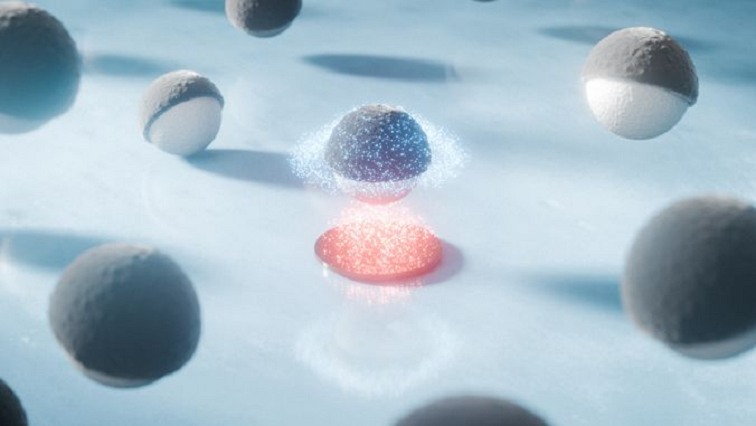The research, published in the journal Soft Matter, demonstrates how specially designed microscopic robots, known as Janus particles, can detect and navigate towards chemical signals, much like bacteria-sensing food.
When placed near a chemical-releasing patch, the particles can automatically “swim” toward it and maintain a stable hovering position directly above it. Drug-carrying particles could automatically locate and hover over infected or damaged tissue that releases specific chemical signals, delivering medication precisely where needed.
Microscopic medical ‘delivery service’
The research team consisting of UH Mānoa Department of Mechanical Engineering PhD student Viviana Mancuso, UH Mānoa Associate Professor William Uspal and Mihail Popescu from the University of Seville in Spain found that particle shape plays a crucial role in achieving a stable hovering process. Elongated particles, shaped like microscopic rods, proved more effective at maintaining their position compared to spherical ones, which tended to drift away over time.
“This research brings us closer to having ‘smart’ microscopic devices that can deliver medicine exactly where it’s needed in the body, much like having a tiny, precise delivery service at the cellular level,” Mancuso said. “Instead of flooding the whole body with medication, which can cause side effects, these microscopic robots could ‘swim’ directly to the problem area—whether it’s an infection, tumor or injury—and deliver treatment right at that spot.”
Industrial applications
Beyond medical applications, this technology could be used to detect damage in materials. Researchers suggest these particles could identify corrosion spots on metal surfaces or locate damage in materials that release specific chemicals when compromised. The study also demonstrated that these particles can find their targets even when released from random positions and orientations, suggesting real-world applicability.
Future work will focus on how these particles perform in more complex environments, including fluids that better simulate biological conditions. The development represents a significant step toward creating autonomous microscopic devices that can perform targeted tasks in medical and industrial applications.
Read the original article on University of Hawaii System.







